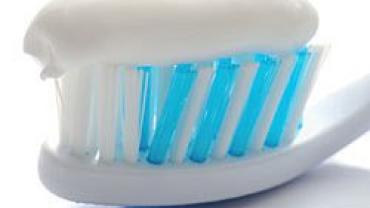
Could fluoride be contributing to an epidemic of neurodevelopmental disabilities pervading our youth today? It seems we can't read a news article without hearing about a child suffering from issues such as autism attention-deficit hyperactivity disorder dyslexia or other cognitive impairments. These neurobehavioral issues are on the rise and are global in scope forcing us to ask Why?
A recent study solidly points to industrial chemicals as being a known cause in injuring the developing brain. Based on the neurobehavioral effects of developmental toxicity fluoride was recently added to the 2006 list of previously noted neurotoxins.
A systematic review and meta-analysis of previous data shows that children living in high-fluoride areas had significantly lower IQ scores than those living in low-fluoride areas. This supports the possible inverse correlation between fluoride intake and neurodevelopment in children.
Also because fluoride crosses the placenta and the developing brain is that much more vulnerable to injury by the toxin than an adult brain fluoride exposure could lead to permanent brain damage (Agency for Toxic Substances and Disease Registry. Toxicological Profile for Fluorides Hydrogen Fluoride and Fluorine [Update] 2003).
In addition to acting as a neurotoxicant in the brain fluoride has been found to cause problems with teeth and bones and also heart liver kidneys gastrointestinal tract lungs blood and hormones. The harm caused to teeth and bones seems ironic because we often think of fluoride as being essential for the normal maintenance of teeth and bones. However our exposure to fluoride is constant and occurs in high concentrations. Fluoride enters our bloodstreams not only from the drinking water but also food dental products industrial emissions and drugs. In excess its effects are not positive.
Fluoride's effect on the thyroid is also curious. As a point of historical and scientific interest fluoride was once prescribed for patients with overactive thyroids in Europe and South America. This begs the question How might excess fluoride be impacting our thyroid function and should this be a consideration in our present obesity epidemic? Excess intake of fluorine compounds was shown to increase the incidence of thyroid disease such as goiter.
The low serum biochemical indexes of triiodthyronine thyroxin and the thyrothropic hormone of adenohypophysis (anterior pituitary) have been associated with excess fluoride; and the excess intake of fluorine ions has been shown to decrease the effectiveness of iodine-containing drugs. Both of these factors show the negative effects of fluoride on iodine absorption which negatively impacts thyroid function.
More than 11% of all Americans and more than 15% of American women of childbearing age presently have urine iodine levels less than 50 mcg/L indicating a moderate to severe deficiency. An additional 36% of reproductive-aged women in the US are mildly iodine deficient. According to these statistics our thyroid health is also at risk. As an aside only 11 countries in the world have more than 50% of their population drinking fluoridated water.
In light of these many health concerns the U.S. Department of Health and Human Services (DHHS) and the U.S. EPA announced a proposal to change the recommended level of fluoride in drinking water to 0.7 mg/L from the currently recommended range of 0.7 1.2 mg/L. The U.S. EPA is also reviewing the maximum amount of fluoride allowed in drinking water which currently is set at 4.0 mg/L (U.S. EPA 2011).
With drinking water being assessed as a possible source of contamination it only stands to reason that other possible points of contamination be evaluated The American Dental Association calculated that there are 192 to 211 mg fluoride in a large (6.4 oz.) tube of toothpaste and 138 to 152 mg fluoride in a small (4.6 oz.) tube.To meet FDA regulations toothpastes must have less than 276 mg fluoride per tube.
So why do we even have fluoride in our toothpaste?
The obvious answer is that fluoride has been associated with the health of our teeth but we're clearly overdoing it.
With incidences of chemical-related neurodevelopmental disorders doubling over the past seven years it stands to reason that we should pay closer attention to what chemicals are in our products and evaluate just how necessary they really are.